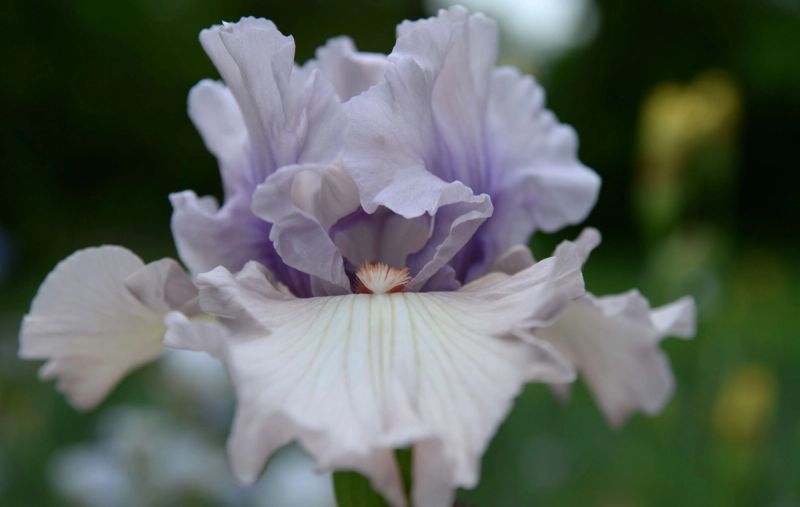When to plant iris bulbs
Velvety. Sumptuous. Deliciously scented. Iris flowers have an otherworldly charm. Scroll on to discover how, where and when to plant these beauteous bulbs.
Why plant iris bulbs?
Is it any wonder that ‘iris’ comes from the Greek word for ‘rainbow’? These flowers have an ethereal beauty and come in hundreds of sumptuous colours, often with delicate, vein-like markings and contrasting painterly splashes.
Winter, spring and summer flowering varieties make it possible to enjoy irises in your garden from February until August. Choose from miniature alpine irises for pots, rockeries and borders or go for tall, bold and brightly coloured flowers with distinctive ‘beards’ (i.e. cute fluffy tufts on their lower petals).
To top it off, iris bulbs are easy to grow, even for beginner gardeners. And, being perennials, they come back year after year so you won’t need to go on an annual spree to top up your beds and containers after flowering.
When to plant iris bulbs in the UK
Autumn is a good time to plant irises. After buying iris bulbs, check the packet to see whether your bulbs prefer to go in the ground early or late in the season.
Winter-flowering irises like Iris reticulata and Iris histrioides are perfect for pots. Get them under the soil as soon as you get your hands on them and they’ll show their heads in February and March, bringing early colour and heralding the return of spring.
Spring and summer varieties such as Iris hollandica and Iris siberica will flower fabulously through May and June.
Bearded irises (Iris germanica) and water irises (Iris ensata) can be planted from August to October and will bloom through July and late summer.
Iris bulbs vs iris rhizomes
Irises can grow in a few ways: from bulbs, rhizomes or even roots.
Iris bulbs are small and onion-shaped. They usually produce small to medium-sized blooms which are ideal for pots and spring displays. These chirpy fellas are perennials and will grow back each year.
Rhizomes are thicker, longer and fleshier-looking and grow just at the soil surface. Bearded irises and water irises often grow from rhizomes. They spread over time and can be divided every few years to increase your blooms and keep the plants healthy.

Where to plant iris bulbs
Bearded irises love full sun, although winter-flowering varieties will cope with some shade.
Bulbs will be happiest in well-drained, fertile soil. If you’re growing on poor ground or clay, dig in plenty of grit and well-rotted organic matter or plant the bulbs in raised beds.
Irises do well in patio pots and windowboxes, on sunny balconies and in beds and borders. Grow miniature varieties through a lawn, plonk water irises around a pond, or plant a row of bearded irises on the allotment to liven up the house with cut flowers.
Planting iris bulbs in pots
Miniature varieties like Iris reticulata and Iris histrioides are hands-down your best bet for pots.
- Pick a wide, shallow container with good drainage and fill it with peat-free compost, leaving around 10cm of space at the top.
- Place the bulbs on the compost, keeping them 5-10cm apart.
- Cover the bulbs with more compost and give them a slosh of water as a welcome drink.
- If you’re feeling extra, top the pot with a thin layer of gravel, some decorative pebbles or a carpet of moss for the bulbs to grow through.
Top tip: Winter irises are a charismatic ingredient in a bulb lasagne. Layer them up in a pot with other early flowering bulbs like daffodils and crocuses for an ever-evolving container display that will keep on giving as spring arrives.


Planting irises in the ground
- Choose a spot where the soil is free-draining. Dig in some grit and well-rotted manure if need be.
- How deep to plant iris bulbs? Make sure they’re about 15cm underground and 5-10cm apart.
- If you’re planting bearded irises, plant the rhizomes horizontally, so they sit just at the soil surface.
- Water your bulbs in but don’t overdo it. Too much of the good stuff can lead to rot.
How to care for irises
Irises aren’t huge fans of water. Unless there’s a drought, rainfall should be enough to keep them happy. Just keep an eye on pots and newly-planted bulbs to ensure they don’t dry out entirely.
Add a layer of mulch around your irises in early spring to give them a nutrient boost, but don’t let it touch any rhizomes, in case of rot.
As the flowers die back, cut the stems back to the base. Leave the foliage until it dies back, too. This will help the plant to gather energy to bloom beautifully next year.
There’s no need to dig your iris bulbs or rhizomes up after they’ve flowered but if you’re growing them in a pot you want to reuse for something else, dry them out, dust them off, then store them in a paper bag in the shed until autumn planting comes back around.
If your iris bulbs or rhizomes are soft and slimy or smell bad, or if the leaves of your plants go yellow and floppy, they might have a fungal disease. Time to dig them up and replace them with healthy ones.